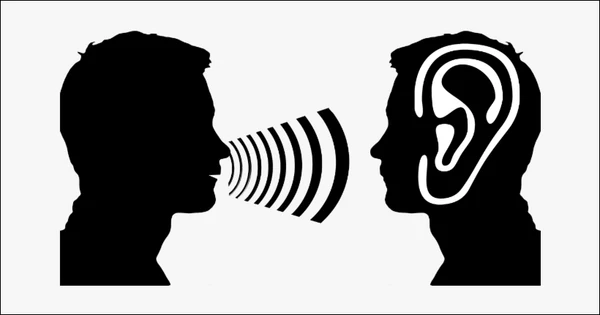Today, the majority of consumers research brands and products online before they walk into your store or contact you by email or phone. By the time they walk through the door of your store they often already have their hearts set on a particular product. Recognizing this, you can tailor your sales strategies to customers in a way that will help you close the sale and establish a long term relationship with the customer. So how can you best engage with these customers in a way that will benefit your business?
In this article, we’ll first expose the myth that digital channels are taking over in-person shopping. New research has found it’s much more interconnected than we think. Then we’ll discuss a few tips on how you can offer your customer the best possible experience, increase your sales and develop a long term relationship with them. The advice in this article is designed to help you with in-store, over the phone, and email conversations.
Cracking the Myth That Retail Stores Are Obsolete
There is no doubt that online sales have gone up in recent years, especially in 2020. However, that doesn’t mean that retail stores are going away anytime soon. The relationship between online shopping and in-person shopping is more complicated than most retailers think. Let’s look at some surveys to get a clearer picture.

According to this article on Retail Dive, 87% of shoppers begin product searches on digital channels. That said, brick-and-mortar stores are still a crucial part of the shopping experience. In fact, in that same article they found that 46% of shoppers still prefer to purchase a product in person. In the audio and video business, the percentage of shoppers who prefer to make purchases in-store is likely significantly higher since most consumers value listening to audio products, or viewing video products, before committing to a purchase. However specific data is not available for consumer audio / video product categories. Clearly, online research is important and customers are better versed about your products than ever before as they even walk into your store.
Another point we need to be aware of is that 71% of in-store shoppers use their smartphones for online research while shopping in the store. Some believe that their device is more important to their in-store experience than an actual person. One reason for the heavy phone use could be a lack of customer service representatives in the store. For example, about four in 10 shoppers say that they struggle to find a salesperson in a retail store, according to a poll by MindTree. That same survey also noted that when customers do speak with a salesperson, they are 43 percent more likely to buy something. Beyond that, they also spend 81 percent more than people who didn’t not receive assistance from a sales person. Knowing all this, it’s especially important to help customers in your store to guarantee sales.
In summary, digital channels are an important starting point for customers, so make sure that your website is updated frequently and that it provides in-depth information about the products you sell. You can also make your website stand out from other competitors by providing practical content to your visitors, such as buyer guides about specific product categories, advice on how to achieve the best sound from your system, upgrade advice, recommended music and more. Establishing your website as a useful resource to your visitors will not only improve your online sales, it will also help to drive more customers to your physical store.
Do’s And Don’ts To Engage With Customers
Do practice active listening
It’s important not just to respond to the customer, but to show them you are actually listening to them. Active listening is an important sales tool that every sales person needs to utilize. It helps you understand the customer, avoid miscommunication, and build a rapport.

There are plenty of ways to incorporate active listening into your habits. For example, you can repeat or summarize what someone is saying to you to show you were paying full attention before making suggestions. Once you’ve started talking to your customer, it’s important to ask about the product they have chosen. Why did they choose it? Was it the features, performance, price? It should become pretty clear in the first couple of minutes if the customer’s mind is already made up about this product, or if they are willing to explore some other options.
In the world of audio, customers often think they know exactly what they want but a further conversation reveals that this was really just where they arrived after doing some quick online research.
Don’t try to talk them out of something, instead demonstrate your expertise
If they are dead set on the product, don’t try to talk them out of it - this won’t be perceived well by the customer. Instead, ask them questions about other components they’ll be connecting with the product and how they’ll be using it. This will be your chance to provide them with setup tips and advise them on how to get the best experience from their new product. In turn, this will begin the process of building a relationship with the customer. Guiding the conversation in this direction might also present a natural opportunity to show them other related products or accessories.
If the customer is open to a further conversation, this is also a great opportunity to share your passion and in-depth knowledge about the subject. In today’s world of endless feature lists, it’s easy for customers to overlook one of the most important aspects of choosing a product - the performance of the product. Taking the time to educate the customer often opens the door to introducing them to higher performance products from the same brand or a different brand altogether. Also, illustrate to them how their listening or viewing experience can improve with other complementary products and accessories. For example, if a customer is ready to purchase bookshelf speakers, explain to them how the experience can be further enhanced with a subwoofer.
If the customer is clearly passionate about music or movies, and your store is not terribly busy, we recommend spending some extra time with them and offering to show them an engaging demonstration. Ask them casually if they’d like to “see something cool” - even if it’s completely out of their price range. Offer them a “wow factor” while visiting your store and they will likely never forget this experience. This level of customer service is what leaves a lasting impression, gets customers to return and makes them recommend your store to their friends and family.
Do read their body language
You can tell a lot about a person by their body language and tone. From Psychology, we know that people will mirror each other when they are interested in something that you’re saying. By mirroring people, you’ll subtly show you are interested in helping them which will result in more sales. An example of mirroring would be crossing your legs and noticing that the other person has done the same. Eye contact is another indication of interest. If the customer is looking at the product and listening to you then they are definitely intrigued and more likely to make a purchase.

If their arms are crossed or they are looking around the store instead of at you, then it may be a sign to give them space. You can’t make a sale if someone has already made up their mind, and in that case your time and expertise may be spent better with another customer.
Don’t assume the customers are in a rush
While online research can provide a lot of information on a product, it can’t tell the customer everything. That’s what makes retailers stand out against the online market. The myth that customers are rushing in to buy one product and leave is not as true as you might think.
According to this survey from Think with Google, 64% of customers said that they are more likely to shop in a store that has personnel who provide personalized and specific recommendations. Your knowledge and helpful advice is part of the reason people are shopping in your store, so you want to ensure you’re there to provide it so that they come back.
Key Takeaways
Many retailers overlook the opportunity to forge a relationship with customers that have their heart sent on purchasing a specific product, whether the purchase is made in the store, online or over the phone. But you don’t have to be one of them! Provide your customer an outstanding experience regardless of how small of a purchase they make and it will go a long way to helping you establish a long term relationship with them. And remember that for most consumers that experience begins with the information on your website and social media channels. While it is easiest to engage customers during an in-person visit to your store, be sure to provide as best of an experience as possible when the customer contacts you via email or on the phone. Many leading retailers offer live online chats on their websites - where customers can ask questions, and retailers can answer them on their phone.
If you’d like to learn more about how to increase your sales as an audio retailer, check out our growing list of marketing articles in our Tips & Guides section of our Blog page.

